
Wine Culture and Information since 2002 - Volume 22
 Wine Culture and Information since 2002 - Volume 22 |
|
Three Ways of Being ChardonnayThe most famous white berried grape of the world, virtually found in every area in which wine it is being produced, it is the protagonist of this month's comparative tasting |
|
Chardonnay probably is the most famous name in the world of wine and also neophytes - as well as the one who are not interested in wine - have heard about it at least once. Frequently considered as a “magic word”, capable of transforming even the most mediocre wine into a divine nectar, Chardonnay is among the most common and renowned grapes in the world. Protagonist of countless white and sparkling wines, in which it is being used alone, Chardonnay is also a companion of other grapes, most of the times used to give specific organoleptic qualities, even more frequently to obtain an easier commercial success. Coming from Bourgogne, Chardonnay has rapidly become successful worldwide thanks to the excellent French wines - in particular Chablis and Champagne - therefore becoming synonym of unquestionable quality. It is superfluous to remember - and this is certainly true for every other grape - Chardonnay is not enough to make a good wine. This is clearly proven by the high number of wines produced with this grapes, most of the times being mediocre and lacking any good quality. Luckily, not all the Chardonnay is cultivated and vinified with speculative and trendy logics: in wines produced with quality principles, the results are excellent and extraordinary. According to an enological point of view, Chardonnay is a very versatile grape, it can be successfully vinified both with the aging in inert containers - such as stainless steel - as well as in wood containers, in particular, the barrique. Thanks to its organoleptic qualities, Chardonnay is also used together with other varieties, while giving the wines in which it is present, an unmistakable touch of immediacy and smoothness. Moreover, the versatility and the organoleptic qualities of Chardonnay make this grape particularly suited to the production of classic method sparkling wines, most of the times used alone. Also thanks to these qualities, Chardonnay has easily conquered the scene in the vineyards worldwide, while offering to producers and consumers the illusion of having a great wine even in pretty modest conditions.
|
|
The goal of our tasting is to compare three different styles of Chardonnay, produced in different areas and - in particular - by using three different wine making techniques. Thanks to its versatility in the cellar, Chardonnay can be in fact successfully vinified both in stainless steel tanks, as well as in wood barrels - in particular the barrique, a technique, the latter, very common in every wine country of the world. We will also pay attention on typical organoleptic qualities of Chardonnay - in particular on its aromas - and the way they change according to the technique used for vinification. The wines selected for our comparative tasting are produced in three regions of northern Italy with 100% Chardonnay and with three different wine making techniques. We selected a wine completely produced in steel tanks, one completely produced in barrique and - finally - one produced with a mixed technique, that is part of the wine aged in steel tanks and the other part in cask.
The first wine of our comparative tasting is Ascevi Luwa's Rupis Chardonnay, produced in Friuli Venezia Giulia, it is the only wine of the three vinified in steel tanks. The second wine is Tre Monti's Colli di Imola Chardonnay Ciardo, produced by aging only a part of the wine in barrique and the remaining part in steel tanks. The third and last wine is Produttori Colterenzio's Alto Adige Chardonnay Cornell, a full bodied wine fermented and aged in barrique for 11 months. Because of the techniques used for the production, the three wines will be served at different temperatures: 10°C (50°F) for Rupis Chardonnay and Colli di Imola Chardonnay Ciardo, 12°C (54°F) for Alto Adige Chardonnay Cornell in order to favor a better development of aromas both given by the aging in barrique and by time. The tasting will be done by using ISO tasting glasses. Finally, in all the three wines, it will be chosen the most recent vintages available.
|
||||||||
|
Because of the different vinification techniques generally used with Chardonnay, it is pretty hard to give reliable indications about the color of the wines produced with this grape. The main factor determining hue in Chardonnay wines, is frequently represented by the fermentation and aging in cask - rarely in casks, frequently in barrique - a pretty common vinification technique for this grape. Chardonnay wines fermented or aged in barrique usually get colors ranging from straw yellow to golden yellow, whereas in wines produced in steel tanks - or however in inert container - the color shows greenish or straw yellow hues. Even the aging in bottle - just like any other white wine - will contribute to accentuate the color of the wine towards golden yellow hues. In this specific case, it should be remembered the aging in bottle can be done for Chardonnay aged in cask, whereas for wines aged in inert containers, it is best to consume them within two or three years. The first wine we will examine is Ascevi Luwa's Rupis Chardonnay, the only wine of the three completely vinified in steel tanks. By observing the wine at the base of the glass, it will be noticed a brilliant straw yellow color, whereas by tilting the glass on a white surface, it will be observed greenish yellow nuances. Then we will observe Tre Monti's Colli di Imola Chardonnay Ciardo, in which will be noticed a deeper color than the previous wine. It will be observed a pale golden yellow color and greenish yellow nuances, effect of the aging of part of the wine in barrique. Finally, it will be observed the color in Produttori Colterenzio's Alto Adige Chardonnay Cornell: in this wine the color is brilliant golden yellow with golden yellow nuances, result of the fermentation and aging in barrique. By placing the glasses side by side, it will be clearly observed how the color tends to get a deeper hue according to the use of barrique in the production of these wines.
|
|
The wine making techniques used for the production of the three wines will be clearly evident even in the olfactory analysis. Chardonnay usually attracts producers - as well as consumers - for its versatility in the production of wines, as it is capable of producing very good wines, both when vinified in steel tanks, as well as in cask. According to this point of view, Chardonnay is the preferred grapes of those consumers who particularly like white wines aged in cask. The contribution of wood in the olfactory qualities of Chardonnay goes beyond the “simple” aroma of vanilla typical in wines aged in barrique. When properly used, barrique positively contributes to the olfactory qualities of Chardonnay, by adding to the freshness of fruit and flowers aromas, the complexity of toasted aromas. This is what we will try to understand from the olfactory analysis of the three wines of our comparative tasting. We will begin the comparison of aromas from Ascevi Luwa's Rupis Chardonnay. After having poured the wine in the glass - and by keeping it in vertical position without swirling - it will be evaluated opening aromas. This initial smell will reveal aromas of banana, peach and pear: banana - in particular - is a distinctive aroma of Chardonnay. After having swirled the glass, a second smell will be done: the aromatic series will be completed by hints of pineapple, acacia, litchi, broom, plum, apple, hawthorn and - finally - hints of elder. Just like banana, even acacia is a distinctive aroma of Chardonnay. The choice of producing this wine in steel tanks favors the development of Chardonnay's typical aroma, as well as allowing an intact olfactory analysis, without any alteration produced by the barrique. The second wine of which we will evaluate aromas is Tre Monti's Colli di Imola Chardonnay Ciardo. Without moving the glass and by keeping it in vertical position, we will evaluate opening aromas. From the glass can be perceived aromas of pear, acacia and banana, qualities we already found in the previous wine and which are typical in Chardonnay. After having swirled the glass, do a second smell which will allow the perception of aromas of hawthorn, green apple, pineapple, peach, plum and, finally - as a sign of the aging of a part of this wine in barrique - an aroma of vanilla. Let's now evaluate the last wine: Produttori Colterenzio's Alto Adige Chardonnay. The evaluation of the opening aromas will allow the perception of hazelnut, toasted and banana: the contribution of barrique is now clearly evident although allowing the perception of banana, a typical aroma in Chardonnay. The second smell will reveal aromas of acacia, butter, coffee, pineapple, broom, passion fruit, grapefruit, vanilla, plum and praline. Despite the contribution of barrique is evident, it is interesting to notice how the aromas of wood are excellently balanced as well as allowing the full perception of flowers and fruit aromas, in particular tropical fruit, frequent in many Chardonnays.
|
||||
|
Chardonnay is a grape with moderate acidity, capable of making pleasing and round the wines in which it is being used. Moreover, it is well suited for the vinification in cask and - in particular - in barrique, a quality which is usually clearly evident in the gustatory analysis as well. The agreeability of Chardonnay is however ensured even by the vinification in steel tanks, where a proper cultural technique and the correct choice of the harvesting period, allow the creation of crisp and pleasing wines. The aging in barrique - of course - makes Chardonnay wines more structured and round, a quality which is however associated both to time and to the cask's volume and type of toasting. The three wines of our comparative tasting - produced with different techniques - confirm the versatility of Chardonnay and its agreeability. Just like in the previous evaluations, we will begin from Ascevi Luwa's Chardonnay Rupis. The attack of this wine is crisp and agreeable, the correspondence to the nose is very good, and the contribution of alcohol is fundamental in order to have a very good balance, while expressing in the mouth the freshness of the fruits perceived to the nose. The second wine we will examine is Tre Monti's Colli di Imola Chardonnay Ciardo. The attack of this wine is crisp and agreeable, however it should be noticed how structure and smoothness are higher than the previous wine, a sign of the aging in barrique. Even the perception of alcohol is evident, efficiently contributing to the good balance of the wine. Finally, it will be evaluated Produttori Colterenzio's Alto Adige Chardonnay Cornell. Despite it is fermented and aged in barrique, the attack of this wine is characterized by a good crispness. The structure and roundness are higher than the previous wines, a direct effect of the barrique, however correctly used and in order to keep the other organoleptic qualities intact.
|
|
The three wines of our comparative tasting are three excellent examples of Chardonnay's versatility and of the correct application of three different vinification methods. The finish of Ascevi Luwa's Rupis Chardonnay is persistent with clear flavors of peach, plum and litchi as well as hints of banana. Even the finish of Tre Monti's Colli di Imola Chardonnay Ciardo is persistent with flavors of pear, apple, pineapple and plum, whereas the finish of Produttori Colterenzio's Alto Adige Chardonnay Cornell - also in this case persistent and agreeable - will have flavors of banana, plum and grapefruit as well as toasted flavors, another sign of the aging in barrique. Despite of personal tastes - either being in favor of the barrique or against it - Chardonnay is a highly versatile grape in the cellar. Its organoleptic qualities can be well integrated with other grapes used for the production of a wine, as well as with different wine making techniques. Finally, Chardonnay confirms its versatility even in wines where it is used alone, something which is well proven by the three samples used for our comparative tasting.
|
Wines of the Month |
|
|
|
Score legend Prices are to be considered as indicative. Prices may vary according to the country or the shop where wines are bought |
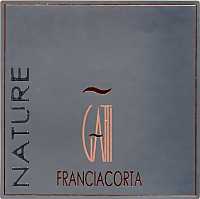
|
|
Franciacorta Nature |
|
| Enrico Gatti (Lombardy, Italy) | |
| Grapes: Chardonnay | |
| Price: € 15.00 | Score: |
| This Franciacorta shows a brilliant golden yellow and nuances of golden yellow, very transparent, fine and persistent perlage. The nose denotes intense, clean, pleasing and refined aromas which start with hints of bread crust, yeast and banana followed by aromas of hawthorn, apple, hazelnut, grapefruit, plum, vanilla, butter and mineral. The mouth has good correspondence to the nose, an effervescent and crisp attack, however balanced by alcohol, good body, intense flavors, agreeable. The finish is persistent with flavors of grapefruit, plum and apple. Part of the base wine ages for 6 months in cask. This Franciacorta ages in bottle on its lees for 24 months. | |
| Food Match: Roasted fish, Stuffed pasta, Broiled crustaceans | |
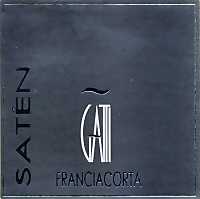
|
|
Franciacorta Satèn 2001 |
|
| Enrico Gatti (Lombardy, Italy) | |
| Grapes: Chardonnay | |
| Price: € 19.00 | Score: |
| This Franciacorta shows a brilliant straw yellow color and nuances of straw yellow, very transparent, fine and persistent perlage. The nose reveals intense, clean, pleasing and refined aromas which start with hints of yeast, grapefruit and bread crust followed by aromas of acacia, banana, hawthorn, pear, vanilla and mineral. The mouth has good correspondence to the nose, an effervescent and crisp attack, however balanced by alcohol, good body, intense flavors, agreeable. The finish is persistent with flavors of banana, grapefruit and pear. This Franciacorta ages in bottle on its lees for 36 months. | |
| Food Match: Pasta and risotto con crustaceans and fish, Sauteed fish and crustaceans | |
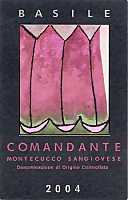
|
|
Montecucco Sangiovese Comandante 2004 |
|
| Basile (Tuscany, Italy) | |
| Grapes: Sangiovese (85%), Merlot (15%) | |
| Price: € 12,00 | Score: |
| The wine shows a brilliant ruby red color and nuances of purple red, moderate transparency. The nose denotes intense, clean and pleasing aromas which start with hints of black cherry and pomegranate followed by aromas of blueberry, blackberry, plum, cyclamen and vanilla. The mouth has good correspondence to the nose, a slightly tannic attack and pleasing crispness, however balanced by alcohol, good body, intense flavors. The finish is persistent with flavors of blueberry and black cherry. This wine ages for 10 months in casks. | |
| Food Match: Broiled meat and barbecue, Sauteed meat with mushrooms, Stuffed pasta | |

|
|
Montefalco Sagrantino Colle Grimaldesco 2002 |
|
| Tabarrini (Umbria, Italy) | |
| Grapes: Sagrantino | |
| Price: € 23.00 | Score: |
| This wine shows an intense ruby red color and nuances of ruby red, moderate transparency. The nose reveals intense, clean and pleasing aromas that start with hints of black cherry and blackberry followed by aromas of plum, blueberry, violet, vanilla, licorice, tobacco, cocoa and pink pepper. The mouth has good correspondence to the nose, a tannic attack and however balanced by alcohol, good body, intense flavors. The finish is persistent with flavors of black cherry, blackberry and plum. This Sagrantino ages for 20 months in cask. | |
| Food Match: Game, Roasted meat, Stewed and braised meat, Hard cheese | |

|
|
Montefalco Sagrantino Passito Colle Grimaldesco 2001 |
|
| Tabarrini (Umbria, Italy) | |
| Grapes: Sagrantino | |
| Price: € 30.00 - 375ml | Score: |
| The wine shows a deep ruby red color and nuances of garnet red, little transparency. The nose reveals personality with intense, clean, pleasing, refined and elegant aromas which start with hints of blackberry, black cherry and prune followed by aromas of dried fig, dried violet, enamel, vanilla, caramel, cocoa, cinnamon, tobacco, tamarind, pink pepper and maces. The mouth has excellent correspondence to the nose, a tannic and sweet attack, pleasing roundness, however balanced by alcohol, full body, intense flavors, very agreeable. The finish is very persistent with long flavors of blackberry, black cherry, prune and tamarind. A very well made wine. This Sagrantino Passito ages for at least 24 months in cask. | |
| Food Match: Confectionery, Hard cheese, Broiled meat | |

|
|
Barbera d'Alba 2003 |
|
| Bruno Rocca (Piedmont, Italy) | |
| Grapes: Barbera | |
| Price: € 20.00 | Score: |
| This Barbera shows an intense ruby red color and nuances of ruby red, little transparency. The nose denotes intense, clean, pleasing, refined and elegant aromas which start with hints of cherry and black currant followed by aromas of blueberry, vanilla, licorice, tobacco, chocolate, leather, mace, eucalyptus and hints of black pepper. The mouth has good correspondence to the nose, a tannic attack and pleasing crispness, however balanced by alcohol, full body, intense flavors, agreeable. The finish is persistent with flavors of cherry, black currant and plum. A well made wine. This Barbera ages for 14-16 months in barrique followed by 6 months of aging in bottle. | |
| Food Match: Game, Roasted meat, Stewed and braised meat, Hard cheese | |

|
|
Barbaresco Rabajà 2002 |
|
| Bruno Rocca (Piedmont, Italy) | |
| Grapes: Nebbiolo | |
| Price: € 37.50 | Score: |
| This Barbaresco shows a brilliant ruby red color and nuances of brick red, moderate transparency. The nose reveals intense, clean, pleasing, refined and elegant aromas which start with hints of cherry and plum followed by aromas of raspberry, violet, rose, vanilla, tobacco, licorice, cocoa, cinnamon, leather and menthol. The mouth has good correspondence to the nose, a tannic attack and pleasing crispness, however balanced by alcohol, full body, intense flavors, agreeable. The finish is persistent with flavors of cherry and plum. A well made wine. This Barbaresco ages for 18 months in cask followed by 12 months of aging in bottle. | |
| Food Match: Game, Roasted meat, Stewed and braised meat, Hard cheese | |
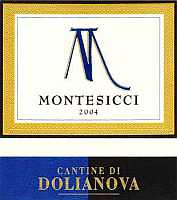
|
|
Montesicci 2004 |
|
| Cantine di Dolianova (Sardinia, Italy) | |
| Grapes: Vermentino (75%), Malvasia (15%), Nasco (10%) | |
| Price: € 12.00 | Score: |
| This wine shows a pale golden yellow color and nuances of straw yellow, very transparent. The nose reveals intense, clean, pleasing and refined aromas which start with hints of peach and almond followed by aromas of broom, hawthorn, apple, pear and plum. The mouth has good correspondence to the nose, a crisp attack and however balanced by alcohol, good body, intense flavors, agreeable. The finish is persistent with flavors of pear, plum and almond. Montesicci ages in steel tanks. | |
| Food Match: Fish and crustaceans appetizers, Pasta and risotto with fish and vegetables | |
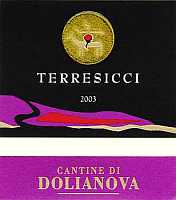
|
|
Terresicci 2003 |
|
| Cantine di Dolianova (Sardinia, Italy) | |
| Grapes: Barbera (85%), Syrah (10%), Montepulciano (5%) | |
| Price: € 25.00 | Score: |
| This wine shows an intense ruby red color and nuances of ruby red, moderate transparency. The nose denotes intense, clean, pleasing and refined aromas that start with hints of cherry and plum followed by aromas of pomegranate, blackberry, black currant, carob, licorice and vanilla. The mouth has good correspondence to the nose, a tannic attack and however balanced by alcohol, good body, intense flavors. The finish is persistent with flavors of cherry, plum and blackberry. Terresicci ages for 12 months in barrique. | |
| Food Match: Roasted meat, Stewed and braised meat with mushrooms, Hard cheese | |
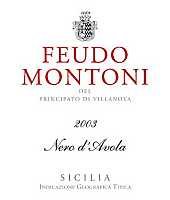
|
|
Nero d'Avola Classico 2003 |
|
| Feudo Montoni (Sicily, Italy) | |
| Grapes: Nero d'Avola | |
| Price: € 12.50 | Score: |
| The wine shows a brilliant ruby red color and nuances of ruby red, moderate transparency. The nose denotes intense, clean and pleasing aromas which start with hints of cherry and plum followed by aromas of blueberry, blackberry, cyclamen, carob and vanilla. The mouth has good correspondence to the nose, a slightly tannic attack and however balanced by alcohol, good body, intense flavors. The finish is persistent with flavors of cherry and plum. This Nero d'Avola ages for 8 months in barrique followed by 4 months of aging in bottle. | |
| Food Match: Broiled meat and barbecue, Stewed meat with mushrooms, Stuffed pasta | |
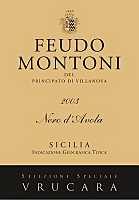
|
|
Nero d'Avola Selezione Speciale Vrucara 2003 |
|
| Feudo Montoni (Sicily, Italy) | |
| Grapes: Nero d'Avola | |
| Price: € 24.00 | Score: |
| The wine shows an intense ruby red color and nuances of garnet red, little transparency. The nose reveals intense, clean, pleasing and refined aromas that start with hints of black cherry and blackberry followed by aromas of blueberry, plum, violet, vanilla, licorice, menthol and cocoa. The mouth has good correspondence to the nose, a slightly tannic attack and good roundness, however balanced by alcohol, good body, intense flavors, agreeable. The finish is persistent with flavors of black cherry, plum and blackberry. This Nero d'Avola ages for 12 months in barrique followed by 6 months of aging in bottle. | |
| Food Match: Broiled meat and barbecue, Roasted meat, Stewed meat, Hard cheese | |
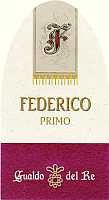
|
|
Val di Cornia Suvereto Cabernet Sauvignon Federico Primo 2002 |
|
| Gualdo Del Re (Tuscany, Italy) | |
| Grapes: Cabernet Sauvignon | |
| Price: € 20.00 | Score: |
| This wine shows an intense ruby red color and nuances of garnet red, little transparency. The nose reveals intense, clean, pleasing, refined and elegant aromas of black cherry, plum and black currant followed by aromas of blueberry, violet, tobacco, vanilla, licorice, cocoa, clove, mace, black pepper and eucalyptus. The mouth has very good correspondence to the nose, a tannic attack and however balanced by alcohol, full body, intense flavors, agreeable. The finish is very persistent with long flavors of black cherry, black currant and plum. A well made wine. Federico Primo ages for 12-14 months in barrique followed by 12 months of aging in bottle. | |
| Food Match: Game, Roasted meat, Stewed and braised meat, Hard cheese | |

|
|
Val di Cornia Suvereto Merlot I'Rennero 2002 |
|
| Gualdo Del Re (Tuscany, Italy) | |
| Grapes: Merlot | |
| Price: € 25.50 | Score: |
| This wine shows an intense ruby red color and nuances of garnet red, little transparency. The nose denotes intense, clean, pleasing, refined and elegant aromas that start with hints of black currant, black cherry and plum followed by aromas of blueberry, violet, tobacco, vanilla, licorice, chocolate, cinnamon, eucalyptus and mace. The mouth has good correspondence to the nose, a tannic attack and pleasing smoothness, however balanced by alcohol, full body, intense, flavors, agreeable. The finish is very persistent with flavors of black cherry, black currant and plum. A well made wine. I'Rennero ages for 12-14 months in barrique followed by an aging of 12 months in bottle. | |
| Food Match: Game, Roasted meat, Stewed and braised meat, Hard cheese | |
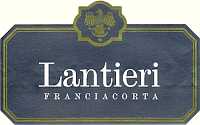
|
|
Franciacorta Brut |
|
| Lantieri de Paratico (Lombardy, Italy) | |
| Grapes: Chardonnay (90%), Pinot Blanc (10%) | |
| Price: € 12.00 | Score: |
| The wine shows a brilliant golden yellow color and nuances of golden yellow, very transparent, fine and persistent perlage. The nose denotes intense, clean, pleasing and refined aromas which start with hints of bread crust, yeast and banana followed by aromas of pineapple, grapefruit, hawthorn, apple, pear, plum and honey. The mouth has good correspondence to the nose, am effervescent and crisp attack, however balanced by alcohol, good body, intense flavors, agreeable. The finish is persistent with flavors of grapefruit, plum and apple. This Franciacorta ages in bottle on its lees for 30 months. | |
| Food Match: Pasta and risotto with fish and crustaceans, Broiled crustaceans and fish | |
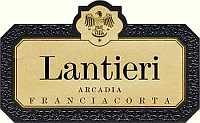
|
|
Franciacorta Arcadia 2001 |
|
| Lantieri de Paratico (Lombardy, Italy) | |
| Grapes: Chardonnay (70%), Pinot Noir (30%) | |
| Price: € 17.00 | Score: |
| This Franciacorta shows a brilliant golden yellow color and nuanced of straw yellow, very transparent, fine and persistent perlage. The nose reveals intense, clean, pleasing and refined aromas which start with hints of hazelnut, bread crust and yeast followed by aromas of banana, hawthorn, grapefruit, apple, plum, vanilla, honey and butter. The mouth has good correspondence to the nose, an effervescent and crisp attack, however balanced by alcohol, good body, intense flavors, agreeable. The finish is persistent with flavors of grapefruit, banana and hazelnut. This Franciacorta ages in bottle on its lees for 48 months. | |
| Food Match: Roasted white meat, Roasted fish, Fish soups | |
|
||||||||
|
DiWineTaste Polls
|
| |||||||
Privacy Policy | |||||||


| Copyright © 2002-2024 Antonello Biancalana, DiWineTaste - All rights reserved |
| All rights reserved under international copyright conventions. No part of this publication and of this WEB site may be
reproduced or utilized in any form or by any means, electronic or mechanical, without permission in writing from DiWineTaste. |